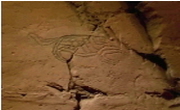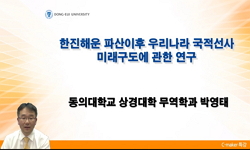This study examines to define the breadth of mind of seon monks and its realization in the aeon poetry in Korea. The breadth of mind is divided into two: ``breadth of mind to free from the object`` and ``breadth of mind to free from life and death.`` ...
http://chineseinput.net/에서 pinyin(병음)방식으로 중국어를 변환할 수 있습니다.
변환된 중국어를 복사하여 사용하시면 됩니다.
- 中文 을 입력하시려면 zhongwen을 입력하시고 space를누르시면됩니다.
- 北京 을 입력하시려면 beijing을 입력하시고 space를 누르시면 됩니다.

선사(禪師)의 여유로움과 한국 선시(禪詩)에서의 구현 = Breadth of mind of Seon monks, and its realization in the Soon poetry in Korea
한글로보기https://www.riss.kr/link?id=A82647859
- 저자
- 발행기관
- 학술지명
- 권호사항
-
발행연도
2011
-
작성언어
-
- 주제어
-
KDC
800
-
등재정보
KCI등재
-
자료형태
학술저널
-
수록면
237-273(37쪽)
- DOI식별코드
- 제공처
- 소장기관
-
0
상세조회 -
0
다운로드
부가정보
다국어 초록 (Multilingual Abstract)
This study examines to define the breadth of mind of seon monks and its realization in the aeon poetry in Korea. The breadth of mind is divided into two: ``breadth of mind to free from the object`` and ``breadth of mind to free from life and death.`` Specifically, ``breadth of mind to free from the object`` is a mind to meditate the reality of the universe and inner side of ego, and to realize its nihility as a nature that gives a bold mind in any circumstances. It illuminates the reason for free through the lesson of lmje Euihyeon(臨濟 義玄,?~867), and examines specific features through the anecdotes of Banggeosa(龐居士,?~?), Danha Cheonyeon (丹霞天然, 739~824), Gyeonhe Seongwoo (鏡虛 惺牛, 1846~1912). And, the breadth of mind to ``free from life and death`` is a mind to enjoy life and to keep clear of death. It is particularly examined by the stories of death of Bohwa(普化), Banggeosa(龐居士) and his daughter Youngjo(靈照). Such mind of monks based on mindless(無心) is realized in the seon poetry of Korea. This study, according to the above features, analyzes the poems that realize ``breadth of mind to free from the object`` and ``breadth of mind to free from life and death``. ``mindless`` of ,Jawoon Gyeonghan (白雲 景閑, 1299~1374), and ``non-duality of ultimate truth and relative truth ``by Jingak Hyesim (眞覺 慧諶, 1178~1234) are chosen to investigate the breadth of mind to free from the objects``. And ``the breadth of mind to free from life and death`` is investigated through the poems of Taego Bowoo (太古 普愚, 1301~1382), Naong Hyegeun (懶翁 慧勒,1320~1376), and Cheongheo Hyjeong(淸虛 休靜, 1520~1604). The poetic realization of ``freedom from life and death`` is investigated based on 1mjonggye(臨終偈, deathbed confession), among which confessions of Naong(懶翁) and Cheongheo(淸虛) are complementary to each other. Each poem has a seon thought based on knowledge based attaining Buddhahood thought(唯識佛性思想) of ``This very mind itself is Buddha.`` (卽心卽佛), and ``Banyajunggwan`` thought (般若中觀思想) of ``This very mind which is Buddha is neither mind nor Buddha.``(非心非佛). However, the poem of the great Gwalheo (括虛 大師, 1720~1789) shows syncretic thoughts of both ideas and it is clearly embodied in his ``Imjonggye``(臨終偈). However, the fact that the seon poetry is not created by the logical ideas, but by the thorough seon practice is also examined by the poems of the Great Buhudang (浮休堂 大師, 1543~1615).
동일학술지(권/호) 다른 논문
-
동아시아 문화교류(文化交流)와 한국한문학(韓國漢文學) ; 조선후기 대청(對淸) 의식과 문화 수용 논리
- 한국한문학회
- 박수밀 ( Su Mil Park )
- 2011
- KCI등재
-
동아시아 문화교류(文化交流)와 한국한문학(韓國漢文學) ; 원중거의 일본체험, 그 의의와 한계-『화국지』를 중심으로
- 한국한문학회
- 박재금 ( Jae Geum Park )
- 2011
- KCI등재
-
동아시아 문화교류(文化交流)와 한국한문학(韓國漢文學) ; 구한말 동아시아 지식인의 문화비전 -창강 김택영을 중심으로-
- 한국한문학회
- 정재철 ( Jae Chul Jung )
- 2011
- KCI등재
-
- 한국한문학회
- 김보경 ( Bo Kyeoung Kim )
- 2011
- KCI등재




 KCI
KCI KISS
KISS






